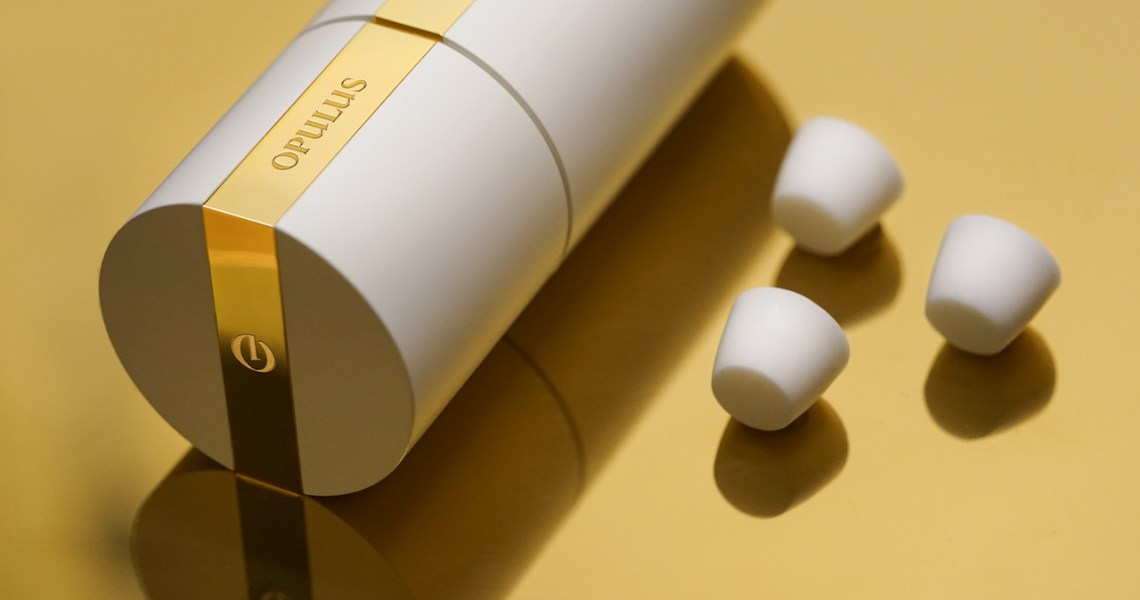While Clarisonic may be shutting down, its founder Dr. Robb Akridge is hoping to amplify the consumer usage of “beauty appliances” through his new venture Opulus.
Funded by angel investors and developed by multiple Clarisonic alums, his new company Opulus applies the Nespresso and Keurig business model to beauty via single-use pods. Launching this September, the Opulus Activator appliance melts and blends solid “opoules” into single-dose creams to then be immediately applied to the face. Akridge calls this a beauty “appliance” rather than a “device,” because it is not something used directly on the skin itself. It’s not the only company getting in on the single-dose trend in beauty: at CES in January 2020, former Foreo CEO Paul Peros debuted the Réduit One, which also uses single-dose pods to deliver active ingredients to hair. It hit the market on May 15.
“Clarisonic was about cleansing, and Clarisonic did that very well,” said Akridge. “But this product has so many different legs.” The brand is starting with a retinol product, but it plans to expand to other skin-care ingredients, as well as hair, body and color cosmetics products. The company is interested in partnering with different brands, as well — similarly to the fact that many coffee brands like Starbucks sell Keurig pods, for example. Akridge has already been in discussion with a hair-care brand.

Pods are solid on the outside and contain an active ingredient on the inside. They’re entirely melted with heat and then blended with a blade inside the wireless-charged appliance. The heat allows the cream to be “offered at peak potency,” said Opulus chief brand officer Michelle Balmer, who is also a Clarisonic alum. The brand is touting sustainability, calling the appliance a “forever bottle” and noting that all of the pods come in recyclable paper wrappers, rather than plastic.
“We know from reading the scientific literature that warm products absorb better,” said Akridge. “The other thing is that this is a retinol product, and we know that it needs certain enzymes to clip it and turn it to retinoic acid, which is the actual molecule that functions to give you those anti-aging benefits. Warm temperatures usually help the enzymes out that are in your skin.”
The repeat purchases of skin-care products necessary for regular use of the appliance make for a business model with more recurring revenue per customer than Clarisonic. Clarisonic had attempted to encourage purchases beyond the device by introducing new attachments and its own line of skin-care products.
Ad position: web_incontent_pos1
When asked for his opinion on L’Oréal’s decision to shut down Clarisonic on September 30 this year, Akridge said that the conglomerate had “never sold a device before, so it’s not really their main focus.” He added, “It’s sort of a unique item within their category, their portfolio, and I’m sure they tried their best. I don’t know the reasons why.”
The key to Opulus’ success will be convincing consumers to make the initial investment in the appliance itself, which will be priced around $300; after that, they can buy the opoules at a range of prices. With less foot traffic in physical retailers due to Covid-19, that will mean persuading shoppers to make a purchase without seeing or trying the appliance in person.

“A year ago, I would have said, ‘Well, we’re a luxury brand; we’re going to start out at the luxury pyramid.’ We’d go to Bergdorf Goodman, and we’d cascade down to be in Saks Fifth Avenue and Nordstrom,” said Akridge. Now, the focus will be much more on the brand’s website: “Retail was already on its way out. There are less people in the stores. I think that the Covid-19 crisis has accelerated what they needed to do. Most brick-and-mortar retailers are pivoting as fast as they can to a dot-com approach to business,” he said.
This lower foot traffic in stores means that sampling is “going to be a big challenge,” said Akridge, but the brand will use video to educate consumers about the product online. Once the device purchase is made, sample opoules can be sent with online orders.
Ad position: web_incontent_pos2
“We couldn’t sample Clarisonic, either, and so it’s really about creating a relationship and goodwill with the consumer,” said Balmer, who noted that a warranty and money-back guarantee will be key. “We have to woo them, and they have to believe in us for them to take that leap of faith and to try something new.”
After working with a 42-person focus group, Akridge said that one key to building trust will be dermatologist partners that the brand is currently lining up. “We know that one thing that is very strong, in the consumer’s eyes, is the belief that the doctors believe in it.”
Balmer said the company will be working with select dermatologists to communicate the education story in late September or early October, but didn’t elaborate.
As the single-dose model in beauty has caught on more strongly in Asia with the popularity of individual ampoules, the company is also in talks with Joyce Beauty to sell in China “as soon as possible,” said Balmer.
When it comes to the possibility of launching in traditional U.S. retailers, Akridge said the brand, like many others, will be taking it day by day. “We’ll see what happens with the world in the next five months.”




